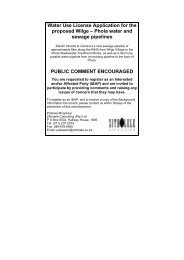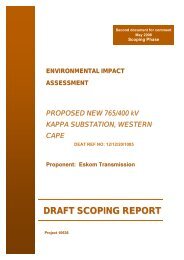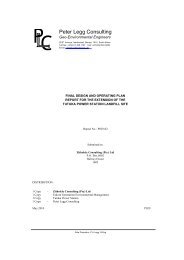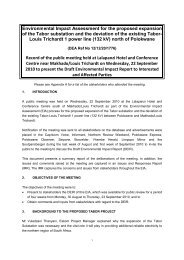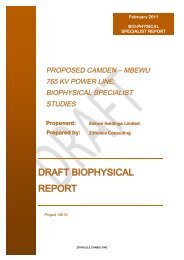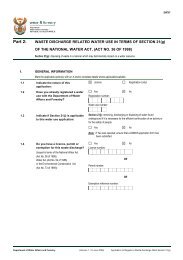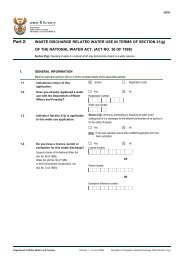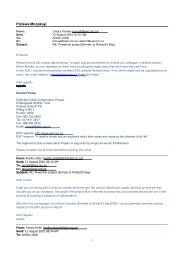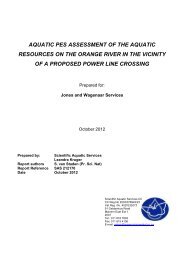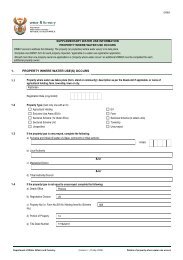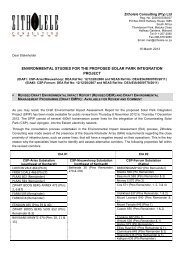FEIR for Boitshepi Landfill Site .pdf - Zitholele.co.za
FEIR for Boitshepi Landfill Site .pdf - Zitholele.co.za
FEIR for Boitshepi Landfill Site .pdf - Zitholele.co.za
You also want an ePaper? Increase the reach of your titles
YUMPU automatically turns print PDFs into web optimized ePapers that Google loves.
August 2010 4388487 BASELINE RECEIVING ENVIRONMENTThe regional environment is described in the section below. For the <strong>co</strong>ntext of this report theregional environment refers to a 50 km radius around the study area.7.1 Bio-Physical Environment7.1.1 ClimateMethodology and Data SourcesThe climate in<strong>for</strong>mation was obtained from the Climate of South Africa database.Airshed Planning Professionals (Pty) Ltd undertook a qualitative assessment addressingemissions from the <strong>co</strong>nstruction, operational and closure phases of the waste disposal site.Since meteorological mechanisms govern the transport, dispersion and eventual removal ofpollutants in the atmosphere, the dispersion potential of the site was evaluated. Use wasmade of hourly average meteorological data from the South African Weather Servicesstation in Vereeniging. The prevailing wind field and wind velocities were analysed, togetherwith the stability classes, temperature and rainfall.The site falls within the Vaal Triangle Airshed Priority Area. This area was declared a priorityarea based on the <strong>co</strong>ncern <strong>for</strong> elevated particulate <strong>co</strong>ncentrations. The DEA implementedsix ambient monitoring stations within the Vaal Triangle to measure ambient <strong>co</strong>ncentrationsof PM10, SO2, NO2, and CO. Two of these stations are located in the vicinity of the <strong>Boitshepi</strong>site, with one in Sebokeng and one at Three Rivers. The ambient <strong>co</strong>ncentrations from thesetwo stations were evaluated as part of the Airshed study (Refer to Appendix C6).Regional DescriptionThe study area displays a mild climate, characterised by warm moist summers and <strong>co</strong>ol drywinters typical of the Highveld climate. The region falls within the summer rainfall region ofSouth Africa, rainfall occurs mainly as thunderstorms from October to March, with a meanannual precipitation (MAP) of 668mm. This varies from 900mm in the central higher lyingareas to 556mm in the lower lying northern and southern areas of the province. Mean annualtemperature varies from approximately 19.3°C in the north of the province to 16.0°C in thesouth. The eastern and central areas, however, experience a lower mean annualtemperature of around 15.0°C. There is large variation between summer and wintertemperatures, with Gauteng experiencing a daily mean temperature in January and July of21.2°C and 9.8°C, respectively (Schulze, 1997).Due to the long clear nights, mild wind and dry air in Gauteng in winter, the occurrence offrost is <strong>co</strong>mmon in the region. The region experiences on average 30 days of frost per year(Schulze, 1997). Winter atmospheric <strong>co</strong>nditions cause temperature inversions, which haveZITHOLELE CONSULTING



